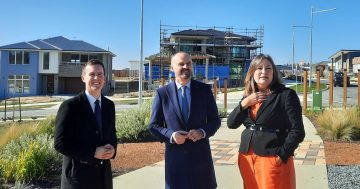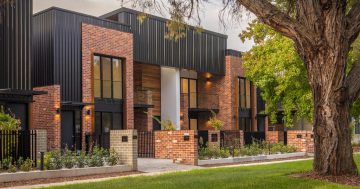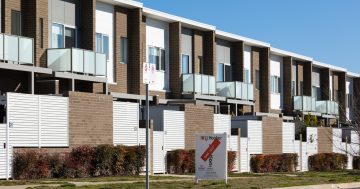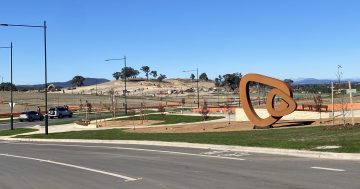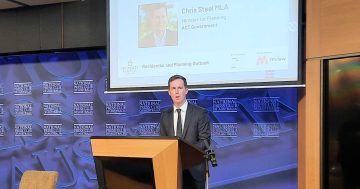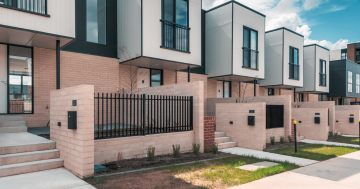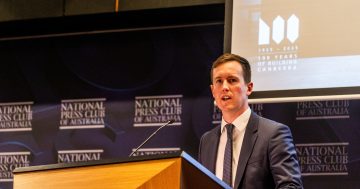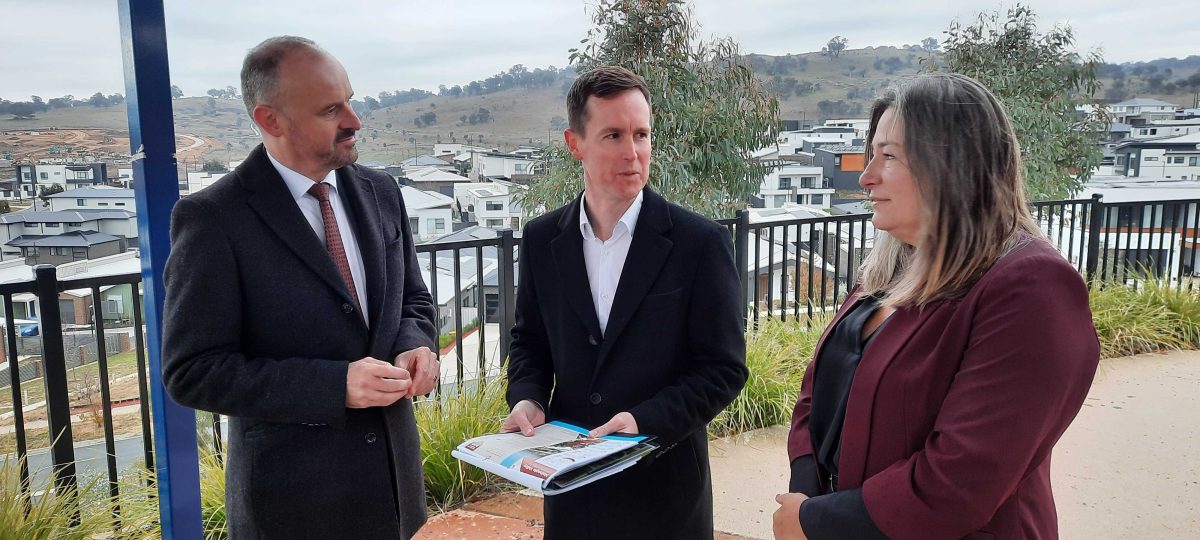
Chief Minister Andrew Barr, Treasurer Chris Steel and Homes and New Suburbs Minister Yvette Berry look through the supply program at Whitlam. Photos: Ian Bushnell.
Treasurer and Planning Minister Chris Steel has rejected any assertion that the ACT Government will be cramming as many homes as possible in a flood of new land releases over the next five years.
Mr Steel said housing quality would not be sacrificed to meet the government’s target of 30,000 new homes by 2030, including 26,000 over the next five years.
He said that on top of these public land releases, the private sector would be able to deliver about 9000 homes over that period.
Announcing a comprehensive $145 million housing package to be included in Tuesday’s (24 June) ACT Budget, Mr Steel said the community would only accept more densification of suburbs if building quality and good design were maintained.
“What we want to see are well-designed homes and so, as we build more medium-density homes, low-rise, missing-middle homes, they have to comply with design guidance,” he said.
“We want to provide choice for Canberrans, releasing land and providing opportunities under the planning system for a range of different types of homes and dwellings, some of which haven’t been previously permitted in the past.”
Mr Steel said the Budget would also provide additional resources to the National Capital Design Review Panel to ensure building quality.
The Budget package takes a multi-pronged approach to increasing housing supply in the ACT with more land being released, more money for social and affordable homes, increased training subsidies for apprentices and continued tax reform.
For eligible home buyers, the threshold for stamp duty concessions will rise above $1 million, by $20,000 to $1,020,000.
The government will also continue to reform the planning system, opening up leased land to developers, enabling new types of housing such as shop-top homes and low-rise apartments in the RZ1 areas and more homes along public transport corridors and around local centres.
The new Housing Supply and Land Release Program, which replaces the Indicative Land Release Program, shows the great bulk of those 26,000 new homes will be in medium and high-density developments, with more than 23,500 in that sector.
The Molonglo Valley leads the way with 7053 homes, including 559 detached dwellings over the five years. Gungahlin is next with 3788, including more than 760 detached homes.
The Inner South is looking at more than 3000 multi-unit homes, while the Woden Valley can expect more than 3400.
In Belconnen, 3298 homes are slated, including more than 1000 detached dwellings. In the inner north, more than 2000 multi-unit homes are expected to be built.
In Tuggeranong, just under 1000 multi-unit homes are expected and Weston Creek is looking at 800.
But the East Lake area looks to be on hold due to environmental hurdles, with just 11 multi-unit homes forecast in Oaks Estate.
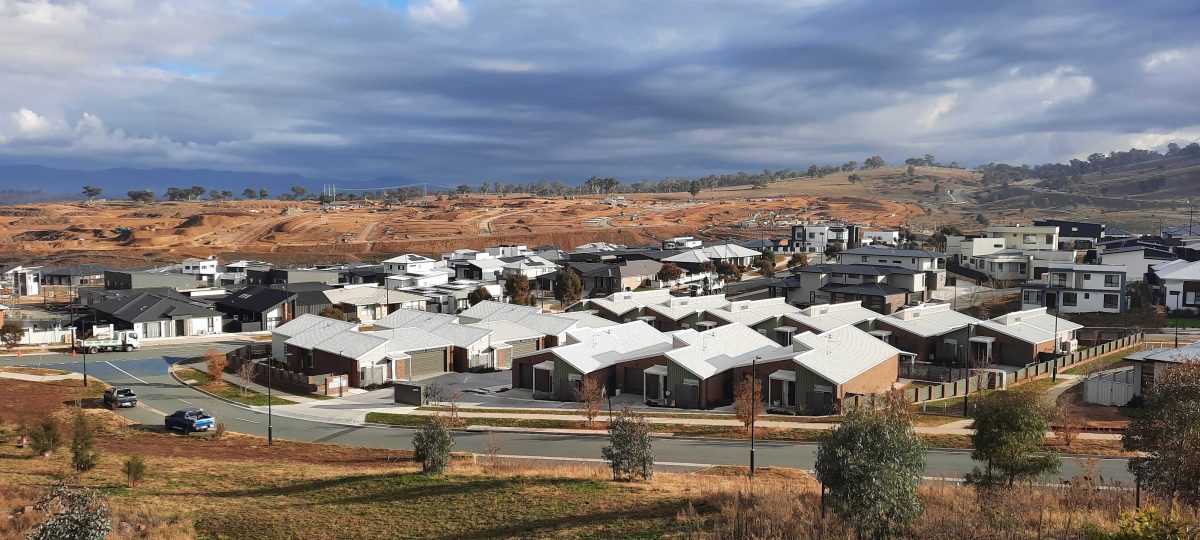
There are new greenfield areas like this one in Whitlam in the program but most releases will be for medium and high-density residential development.
Other areas that might come on stream include the former CSIRO Ginninderra site in Canberra’s north, which is the subject of ongoing negotiations between the Commonwealth and the ACT.
The government is increasing community, affordable and social housing with 85 new public housing dwellings delivered through Community Housing Providers under the Housing Australia Future Fund Facility; $20 million additional funding for the Affordable Housing Project Fund, increasing the total to $100 million; 300 affordable Build-to-Rent homes; and 17 new social housing townhouses acquired in Coombs under the Social Housing Accelerator.
The 15 per cent requirement for affordable and social housing will also be increased to 20 per cent for the new land releases, and the Budget will quadruple the land tax exemption for community housing.
To boost skills, training subsidies will be increased to 90 per cent for carpenters, plumbers, tilers, bricklayers and other critical construction trades.
Already announced is an expansion of the Try-a-Trade program in ACT public high schools for young women and $250 cost-of-living payments to apprentices and trainees, including an extra $250 for first-year apprentices.
Property Council ACT & Capital Region Executive Director Ashlee Berry said the focus on planning, tax, skills and land release was on the right track, but results would ultimately depend on delivery.
“The increase in land release volumes is welcome, but if over 90 per cent of new dwellings are expected to be multi-unit, planning reforms and construction viability will be crucial to turning these sites into homes,” she said.
Ms Berry said land release commitments were important but noted that large numbers of blocks remained available over the counter through the Suburban Land Agency.
“That tells us the issue is not just land availability – it’s land affordability. If we want take-up, we need to make the numbers work for buyers and builders,” she said.












